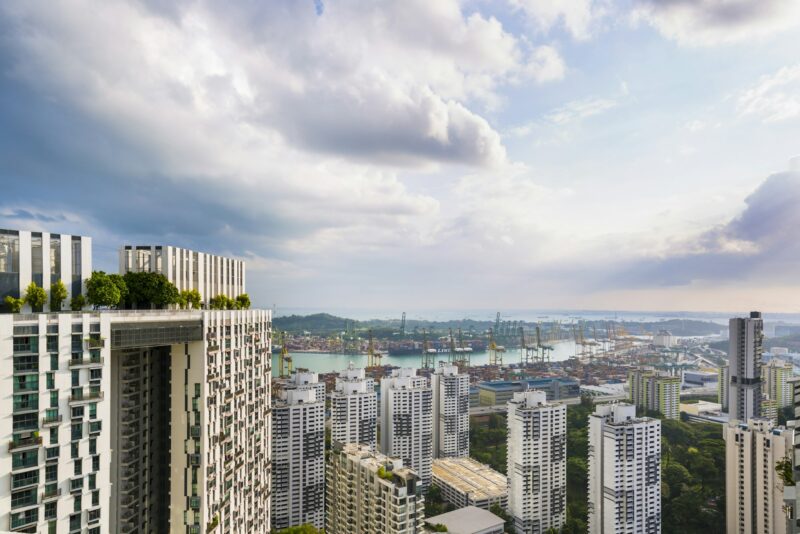As Singapore continues to emerge as a thriving global hub for commerce and finance, the real estate market is witnessing significant transformations, particularly in 2025. Foreign investments are reshaping the landscape, infusing the sector with fresh capital and diverse development projects.
But what does this influx mean for local buyers? The dynamics are complex, influenced by a multitude of factors ranging from economic policies to shifts in global market trends. This article delves into the intricate interplay of foreign capital and Singapore’s real estate market. Will explore how international investors are navigating the evolving regulations, the implications for housing prices, and the potential risks and rewards that come with such substantial foreign interest. As Singapore stands at the crossroads of opportunity and challenge, understanding these forces is crucial for anyone looking to grasp the future of real estate in this vibrant city-state.
Current Trends in Foreign Investment into Singapore’s Property Market

In 2025, the landscape of foreign investment in Singapore’s property market is evolving at a rapid pace, showcasing a blend of traditional interests and emerging trends. Investors from countries like China, India, and Australia have continued to show robust interest, drawn by Singapore’s political stability and its strategic position as a business hub in Southeast Asia.
Notably, there’s a noticeable shift towards sustainability-driven developments, where eco-friendly projects such as River Green are attracting premium investments. Additionally, the rise of remote work has prompted a surge in demand for properties that cater to lifestyle changes, with an increasing number of foreign buyers seeking residential units in integrated townships.
This confluence of factors creates a dynamic and complex investment environment, highlighting Singapore’s unique appeal amidst a backdrop of global economic uncertainty. As we look ahead, understanding these trends becomes crucial for grasping the broader implications of foreign investment on Singapore’s ever-evolving real estate market.
The Drivers of Foreign Investment: What Attracts Investors?
Foreign investment in Singapore’s real estate market is primarily driven by a potent mix of economic stability, strategic location, and robust regulatory frameworks. Investors are drawn to Singapore’s reputation as a business-friendly hub, where transparency and a well-established legal system foster a sense of security.
Additionally, thcity-states’es skilled workforce and innovation-driven environment present enticing opportunities for growth and development. However, it’s not just the pragmatic factors that capture investors’ attention; the allure of premium properties in a vibrant city, coupled with potential high returns on investment, adds an irresistible charm. As we march into 2025, understanding these facets will be crucial for navigating the evolving landscape of Singapore’s real estate market, which is set to adapt remarkably to the shifting tides of global investment attraction.
Sector-wise Analysis: Where Are Foreign Investments Flowing?

In 2025, the Singapore real estate market is witnessing a dynamic shift in foreign investment patterns, with notable sectors attracting substantial capital inflows. The commercial real estate segment, particularly in technology-driven hubs, has emerged as a focal point for overseas investors, driven by the booming demand for office space catering to tech companies and startups.
Additionally, the residential sector, especially luxury condominiums, continues to allure affluent foreign buyers who seek a foothold in this vibrant city-state. Meanwhile, the hospitality industry is experiencing a resurgence in interest, as global travelers return, revitalizing investment in hotels and resorts.
Interestingly, sustainability-focused developments are also gaining traction, reflecting a growing awareness among investors about green building practices. This combination of factors paints a multifaceted picture of where foreign investments are flowing, revealing a rich tapestry of opportunities and challenges in Singapore’s evolving real estate landscape.
Conclusion
In conclusion, the dynamics of foreign investments in Singapore’s real estate market in 2025 reflect a multifaceted interplay of opportunity and challenge. As global investors continue to recognize Singapore as a prime destination for capital allocation, developments like River Green exemplify the modern, sustainable living solutions being introduced to meet the rising demand.
This influx not only bolsters the local economy but also enhances the overall urban landscape, fostering innovation and growth. However, it is essential for policymakers to carefully consider the implications of this foreign capital, ensuring that the benefits are equitably distributed among residents while preserving the unique character of Singapore.
Moving forward, the balance between attracting international investments and maintaining local interests will be crucial in shaping the future of this land’s real estate sector.


